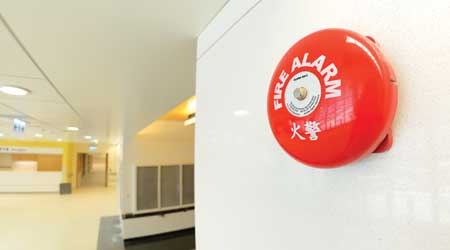Understanding Interconnections Involving Fire Alarm Systems
Last of a 3-part article on how to plan, prepare, and hire for fire system upgrades
Fire alarm systems are part of larger systems, and understanding the interconnections is crucial. “Not understanding how the specific system will be integrated with other fire protection systems in the building can be a reason for added costs and time delays,” says Jelenewicz.
Muller agrees it’s essential to have proper details provided in the project specification regarding interfaces with other building systems, such as HVAC, elevators, security and doors.
“Typically a fire alarm replacement project focuses on the fire alarm system itself and may neglect how the existing system interfaces with other disciplines, who is responsible for the interfaces, and how the new system will duplicate or improve upon those interfaces,” Muller says.
With an upgrade of a sprinkler system, adds Jelenewicz, the system “may be required to have additional flow and tamper switches that need to be connected to the fire alarm system. If the existing fire alarm system does not have the capability to add these new devices, the fire alarm system may need upgrades, or the existing fire alarm system may need to be replaced.”
To prevent this from happening, says Jelenewicz, it’s important to understand how systems work together. For instance, he says, “when upgrading a sprinkler system, it is important to determine if an adequate water supply is available to support the system upgrades. This should include performing a new water supply test to determine the status of the existing water supply and performing hydraulic calculations to determine if modifications are needed to the existing water supply.”
Depending on the space, there may be limitations to when work can be done, so it’s important to understand these and plan for them. At Arizona State University, says Clint Lord, director of facilities management, “access to buildings [for certain projects] is limited to the times when school is out of session. This leaves limited time windows in order to replace a major building system and can cause errors during the project that delay final sign off.”
It’s also important to have a plan on how to handle existing hazardous building materials says Jelenewicz. “Often during the construction of systems upgrades, newly installed system components can impact hazardous building materials such as lead paint and asbestos. If a contractor finds hazardous building materials during construction, and there wasn’t a plan on how to remove the hazardous material safely, it can shut down a project for an indefinite amount of time.”
Lord says he has seen projects run behind or over budget due to “an abundance of hazardous materials in our older buildings that must be abated as part of the project.”
During upgrades, some essential systems may need to be taken out of service, a situation that needs to be managed carefully, says Keith. For example, if a fire pump is being installed and the engine needs to be replaced, that work could mean that the only adequate water supply for the sprinkler system may be down for a few days. Is it best to work in off hours, when the facility is not up and running? Is it better to establish a fire watch? “You need to manage the threat when you take components out of service,” says Keith. Also important is that people are “aware of the impairment situation — the period of time when the system is out of service. What has been put in place to take care of notifications while the system is being repaired or installed?”
The final step is planning for reoccupancy or phased construction while the building remains occupied, says Carrigan.
“It is imperative to detail the construction phasing, to determine which fire/life safety systems will be operational or impaired during construction,” he says. “The occupancy phasing is equally important, as temporary systems and fire watch may be required depending on the construction phasing.”
Angela Maas is a freelance writer who covers facility management topics. She is a former managing editor of Building Operating Management.
Related Topics:














